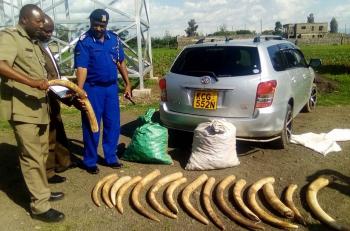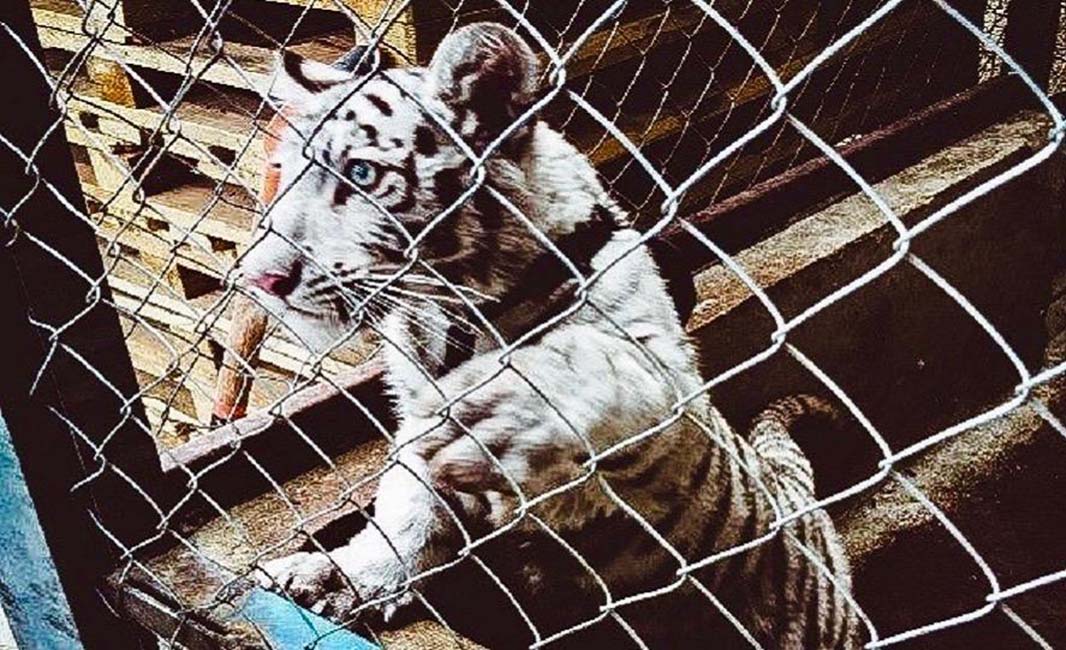Police, environmental authorities, wildlife and forestry agencies, border patrols, and customs agents in 109 countries last month banded together for Operation Thunderball, the world’s largest-ever anti-wildlife trafficking endeavor. And their joint efforts were enormously successful.
On July 10, the World Customs Organization (WCO) announced that the joint operation, conducted with the international police agency Interpol throughout June, “resulted in the seizure of large quantities of protected flora and fauna across every continent.” Based out of Interpol in Singapore, the agencies coordinated seizures of illegally-trafficked plant and animals around the globe, arresting nearly 580 suspects. They have plans to arrest many more, WCO secretary general Kunio Mikuriya said in a statement.

Slender billed parakeets siezed by Police in Chile/PIC: INTERPOL
Interpol and WCO have worked together before, but had never previously cooperated on a mission with such a comprehensive scale involving so many authorities from different agencies around the globe. And they say they will do it again. “As clearly illustrated by the results of Operation Thunderball, close cooperation at international and national levels to combat wildlife crime must never be under-estimated,” Mikuriya said. “Such initiatives will be replicated to raise awareness within the global law enforcement community on the gravity of global wildlife crime and to better coordinate cross-agency efforts, including the engagement of civil society groups to detect and deter wildlife criminal networks.”
The bust resulted in nearly 1,830 seizures of growing things and creatures, found both dead and alive, whole and in parts. Authorities from around the world captured 23 live primates, 30 big cats, 440 elephant tusk pieces and 1200 additional pounds of ivory, five rhino horns, more than 4,300 birds, almost 1,500 reptiles and nearly 10,000 turtles and tortoises, about 7,700 wildlife parts from a range of species, 74 truckloads of timber, 2,600 plants, and almost 10,000 “marine wildlife items.”
Wildlife traffickers were caught both in the act of smuggling and while engaging in online sales. For example, the WCO said it seized seven packages of pangolin parts in Nigeria. The parts were headed for Asia. Meanwhile, in Uruguay, three suspects were caught while smuggling more than 400 protected wildlife species. In Spain, illegal online trade led to 21 arrests, and in Italy 1,850 birds were seized based on online investigations.
 Ivory seizures by Kenyan wildlife patrols/ PIC: INTERPOL
Ivory seizures by Kenyan wildlife patrols/ PIC: INTERPOL
Wildlife traffickers were caught both in the act of smuggling and while engaging in online sales. For example, the WCO said it seized seven packages of pangolin parts in Nigeria. The parts were headed for Asia. Meanwhile, in Uruguay, three suspects were caught while smuggling more than 400 protected wildlife species. In Spain, illegal online trade led to 21 arrests, and in Italy 1,850 birds were seized based on online investigations.

Leave your comments
Login to post a comment
Post comment as a guest